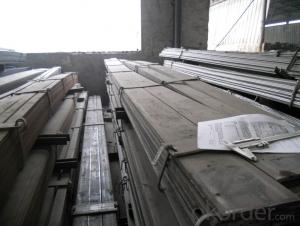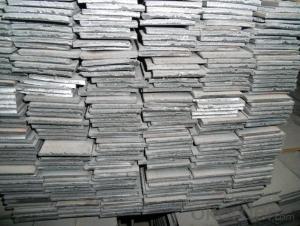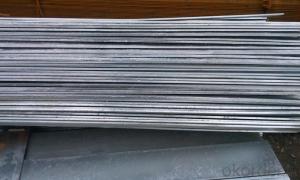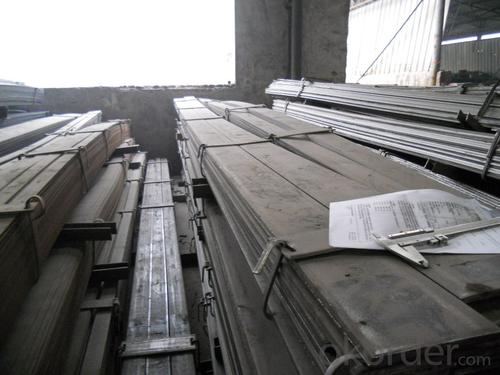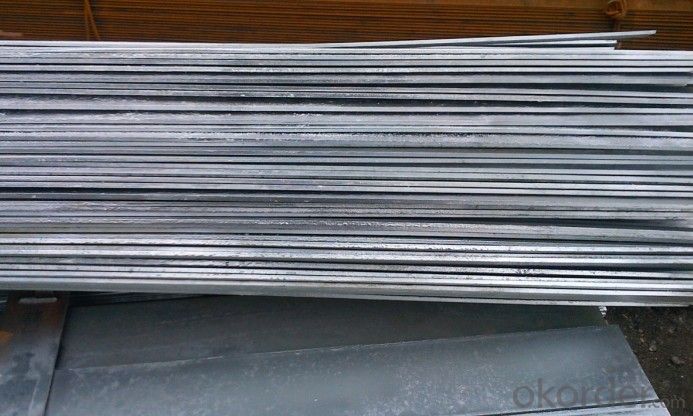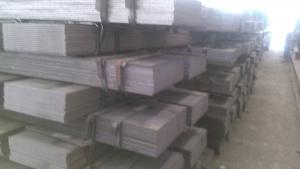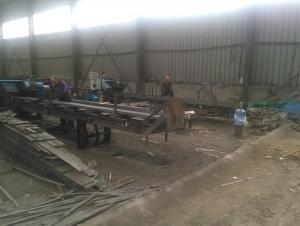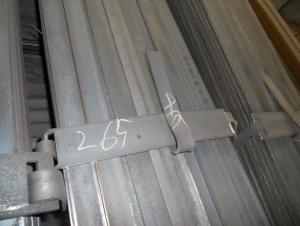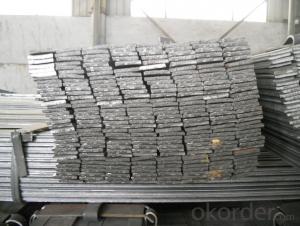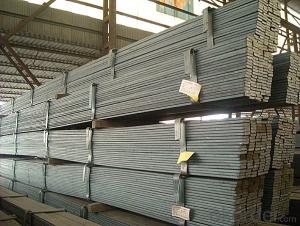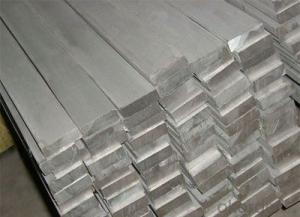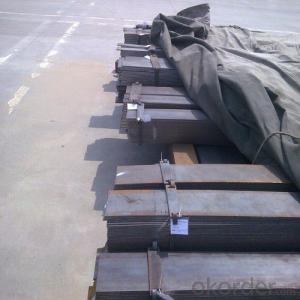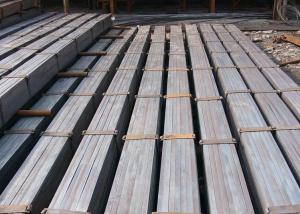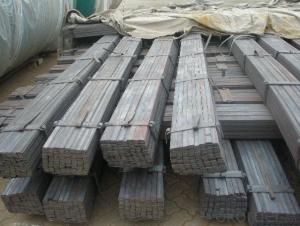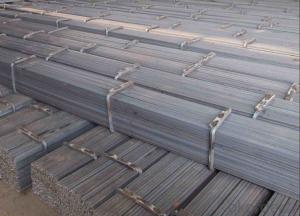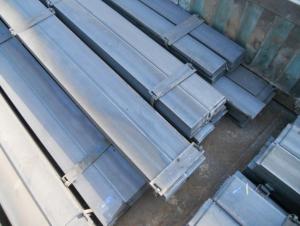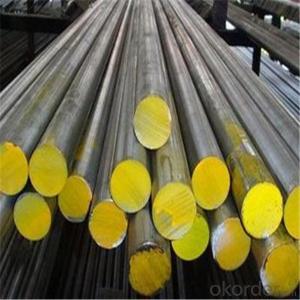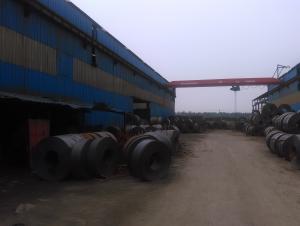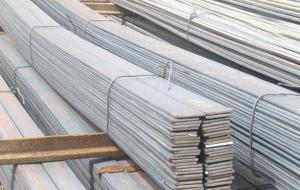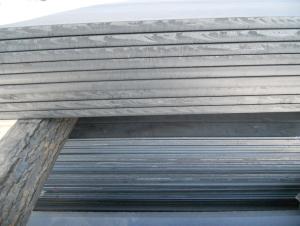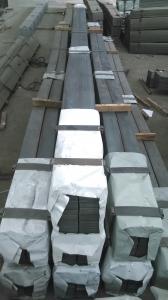flat bar
- Loading Port:
- China Main Port
- Payment Terms:
- TT OR LC
- Min Order Qty:
- -
- Supply Capability:
- -
OKorder Service Pledge
OKorder Financial Service
You Might Also Like
Product Description:
Specification of Mild Steel Flat Bar
Commodity: Mild Steel Flat Bar
Standard: GB;JIS
Material: Q195-235;SS400
Brand name: FLATSPACE
Origin place: China
Thickness: 3mm-30mm
Width:20mm-200mm
Length: Max 12m
Certification: SGS/BV
Chemical composition of Q235
Alloy No | Grade | Element(%) | ||||
C | Mn | S | P | Si | ||
Q235 | B | 0.12—0.20 | 0.3—0.7 | ≤0.045 | ≤0.045 | ≤0.3 |
Physical properties of Q235
Alloy No | Grade | Yielding strength point(Mpa) | Tensile strength (Mpa) | Elongation after fracture(%) | ||||||
Thickness (mm) | Thickness (mm) | |||||||||
≤16 | >16--40 | >40--60 | >60--100 | ≤16 | >16--40 | >40--60 | >60--100 | |||
≥ | ≥ | |||||||||
Q235 | B | 235 | 225 | 215 | 205 | 375--500 | 26 | 25 | 24 | 23 |
Usage/Applications of Mild Steel Flat Bar
Widely used for construction, Machinery manufacturing, Iron tower steel structure, Shipbuilding; Steel grating, Staircase, Bridge, Viaduct, Railway spare parts, Boilers making etc.
Packaging & Delivery of Mild Steel Flat Bar
Packaging Details: The Mild Steel Flat Bars are packed in bundles and loaded in 20 feet/40 feet container, or shipped by bulk cargo ,also we can do as customer's requirements.
Delivery Details:30~45 days upon the receipt of buyer payment by T.T. or L/C.
Production Flow of Mild Steel Flat Bar
The Mild steel flat bar is made through three processes:
1.Feeding the material: Feeding the row material (the steel plate) to Slitting Line.
2.Slitting:The steel plate would be slitted into expected width by lengthways cutter.
3. Leveled and cutting: The plat bar would be ground into level by the grinder and then cut into required length
- Q: Can steel flat bars be used for elevator shafts or doors?
- Yes, steel flat bars can be used for elevator shafts or doors. Steel flat bars are known for their strength, durability, and versatility, making them suitable for various structural applications such as elevator shafts or doors.
- Q: Can steel flat bars be hardened or tempered?
- Yes, steel flat bars can be hardened or tempered. Hardening is a process that involves heating the steel to a specific temperature and then rapidly cooling it, usually by quenching it in water or oil. This process transforms the steel's molecular structure, making it much harder and more resistant to wear and deformation. Tempering, on the other hand, is a process that follows hardening and involves reheating the steel to a lower temperature and then cooling it slowly. This step helps to relieve internal stresses and improve the steel's toughness and ductility, making it less brittle and more suitable for certain applications. Both hardening and tempering can be applied to steel flat bars to achieve specific mechanical properties depending on the desired application. However, it is important to note that the specific hardening or tempering process and parameters may vary depending on the type of steel used and the desired outcome.
- Q: Can steel flat bars be used for making jewelry?
- Certainly, jewelry can indeed be created using steel flat bars. Steel, being a versatile and durable material, lends itself well to the formation of diverse shapes, including flat bars. These bars can subsequently be molded and manipulated to form distinctive and individualized jewelry pieces. In recent times, steel jewelry has gained considerable popularity owing to its contemporary and industrial appearance. It exudes a sleek and modern aesthetic that can be further accentuated by employing various finishes, such as polished, brushed, or even gold or silver plating. Moreover, steel jewelry boasts resistance against tarnishing and corrosion, rendering it a pragmatic choice for everyday use. Additionally, steel flat bars can be effortlessly engraved or imprinted with designs, names, or symbols that hold personal significance, thus imparting a customized touch to the jewelry. Nonetheless, it is worth noting that steel is a weighty material, which may render it unsuitable for delicate or lightweight jewelry designs.
- Q: How do steel flat bars contribute to the overall aesthetics of architectural designs?
- Steel flat bars can contribute to the overall aesthetics of architectural designs by adding sleekness, modernity, and a sense of strength. Their clean lines and smooth surfaces create a visually appealing contrast against other architectural elements. Steel flat bars can be used to create eye-catching features like handrails, window frames, or decorative accents, enhancing the overall aesthetic appeal of the building. Additionally, their versatility allows architects to incorporate them into various design styles, from contemporary to industrial, making them a popular choice in architectural projects.
- Q: How do steel flat bars contribute to the fire resistance of structures?
- Steel flat bars contribute to the fire resistance of structures by providing structural support and stability. Due to their high melting point and excellent strength, steel flat bars can withstand extreme temperatures, preventing the collapse of the building during a fire. Additionally, they help to distribute the heat evenly, reducing the risk of localized hotspots and structural failure.
- Q: What are the different types of surface finishes for brass steel flat bars?
- There are several different types of surface finishes available for brass steel flat bars, each offering unique properties and aesthetics. Some of the most common surface finishes for brass steel flat bars include: 1. Mill Finish: This is the most basic and natural surface finish, typically achieved through the initial manufacturing process. It has a rough and uneven appearance, with visible tool marks and imperfections. Mill finish is often chosen for its cost-effectiveness and suitability for applications that do not require a smooth or polished surface. 2. Brushed Finish: This finish is achieved by brushing the surface of the brass steel flat bar with abrasive materials, typically in a linear pattern. It results in a smooth and uniform texture with visible brush marks. Brushed finish is often preferred for applications that require a decorative and contemporary appearance. 3. Polished Finish: Polished finish involves enhancing the surface of the brass steel flat bar to achieve a high level of shine and reflectivity. It is achieved through a series of polishing and buffing processes, using progressively finer abrasive materials. Polished finish is commonly used in decorative applications, as it creates a luxurious and elegant appearance. 4. Satin Finish: Satin finish is similar to brushed finish but with a softer and more refined texture. It is achieved by using fine abrasive materials to create a smooth and consistent non-reflective surface. Satin finish is often chosen for its matte appearance and its ability to hide scratches and fingerprints, making it suitable for highly visible applications such as architectural elements and furniture. 5. Antique Finish: Antique finish involves treating the surface of the brass steel flat bar to create an aged or weathered appearance. This can be achieved through various methods such as chemical treatments, oxidation, or distressing techniques. Antique finish is commonly used in furniture and decorative items to add a vintage or rustic look. 6. Powder Coating: Powder coating is a process where a dry powder is electrostatically applied to the surface of the brass steel flat bar and then cured to form a durable and protective layer. It offers a wide range of color options and provides excellent resistance to corrosion, chemicals, and UV rays. Powder coating is often chosen for its versatility and durability in outdoor applications. These are just a few examples of the different types of surface finishes available for brass steel flat bars. The choice of finish depends on the desired aesthetic, functionality, and the specific requirements of the application.
- Q: What are the different methods of surface hammering for steel flat bars?
- There are several methods of surface hammering for steel flat bars, each with its own unique characteristics and applications. These methods are used to create different textures and patterns on the surface of the bars, enhancing their aesthetic appeal and functionality. 1. Planishing: This technique involves using a planishing hammer or mallet to repeatedly strike the surface of the steel bar. The blows are carefully controlled and overlapping, resulting in a smooth, uniform texture. Planishing is commonly used to create a polished, reflective surface on steel bars, often seen in decorative applications. 2. Peening: Peening is a method where the steel bar is struck with a ball-peen hammer or a similar tool. The blows create a series of small indentations on the surface, giving it a textured appearance. This technique is often used to improve the grip or traction of steel bars, making them suitable for applications where slip resistance is essential. 3. Cross-peening: Cross-peening is a variation of peening where the hammer strikes the steel bar at an angle, creating a series of crossed indentations. This technique is typically employed to increase the strength and durability of the steel bar, as the cross-peened surface helps distribute stress more evenly. 4. Raising: Raising is a method used to shape steel flat bars into three-dimensional forms. It involves hammering the steel bar against a curved surface, such as a stake or an anvil, to gradually shape it into the desired contour. Raising can be used to create bowls, cups, or any other curved shapes from flat bars. 5. Chasing: Chasing is a technique where a pattern or design is hammered onto the surface of the steel bar using specialized chasing tools. The tools have different shapes and sizes, allowing for intricate and detailed designs to be created. Chasing is commonly used in ornamental metalwork to add decorative elements to steel flat bars. 6. Texturing: Texturing involves using various tools, such as a texturing hammer or stamp, to create a specific texture or pattern on the surface of steel bars. This method can be used to achieve a wide range of effects, from dimples and ridges to a hammered or brushed appearance. Texturing adds visual interest and can also improve the grip of the steel bars. Overall, these different methods of surface hammering for steel flat bars offer flexibility and versatility in terms of texture, pattern, and functionality. They allow for customization and innovation in various applications, from decorative metalwork to industrial and architectural uses.
- Q: Are steel flat bars suitable for architectural metalwork?
- Yes, steel flat bars are suitable for architectural metalwork. They are versatile and commonly used in various architectural applications such as framing, support structures, decorative elements, and trim work. With their strength, durability, and ability to be easily shaped and welded, steel flat bars provide architects and designers with a reliable material option for creating aesthetically pleasing and functional architectural features.
- Q: Can steel flat bars be used in the automotive industry?
- The automotive industry finds steel flat bars useful. Steel's strength, durability, and versatility make it a popular material in this industry. Steel flat bars have many applications in automotive manufacturing, such as structural components, body panels, chassis, suspension systems, and engine components. The bars' flat shape makes them easy to fabricate, cut, and weld, which suits various manufacturing processes. Furthermore, manufacturers can choose from different grades and thicknesses of steel flat bars to meet their specific automotive needs. Overall, steel flat bars offer a cost-effective and reliable solution for the automotive industry, delivering the necessary strength and performance for vehicles.
- Q: Are steel flat bars suitable for making architectural screens or grilles?
- Yes, steel flat bars are suitable for making architectural screens or grilles. They are strong, durable, and can be easily manipulated to create intricate designs. Additionally, steel is a versatile material that can withstand various weather conditions, making it an ideal choice for outdoor architectural features.
Send your message to us
flat bar
- Loading Port:
- China Main Port
- Payment Terms:
- TT OR LC
- Min Order Qty:
- -
- Supply Capability:
- -
OKorder Service Pledge
OKorder Financial Service
Similar products
Hot products
Hot Searches
Related keywords
